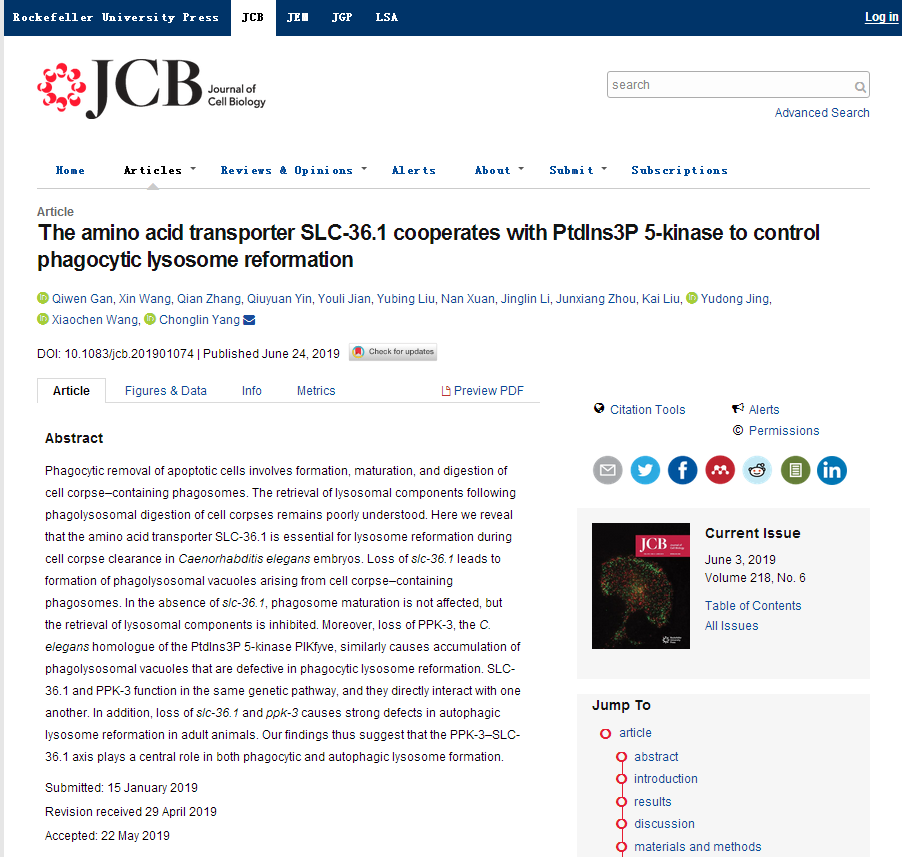J Cell Biol. 24 June,2019|Supp Info:http://doi.org/10.1083/jcb.201901074
The amino acid transporter SLC-36.1 cooperates with PtdIns3P 5-kinase to control phagocytic lysosome reformation
Qiwen Gan11,2, Xin Wang1, Qian Zhang2, Qiuyuan Yin1, Youli Jian2, Yubing Liu3,Nan Xuan2,Jinglin Li1,Junxiang Zhou2,Kai Liu2, Yudong Jing2,Xiaochen Wang3,and Chonglin Yang1.
Abstract
Phagocytic removal of apoptotic cells involves formation, maturation,and digestion of cell corpse–containing phagosomes.The retrieval of lysosomal components following phagolysosomal digestion of cell orpses remains poorly understood.Here we reveal that the amino acid transporter SLC-36.1 is essential for lysosome reformation during cell corpse clearance in Caenorhabditis elegans embryos. Loss of slc-36.1 leads to formation of phagolysosomal vacuoles arising from cell corpse–containing phagosomes.In the absence of slc-36.1,phagosome maturation is not affected,but the retrieval of lysosomal components is inhibited.Moreover, loss of PPK-3, the C. elegans homologue of the PtdIns3P 5-kinase PIKfyve, similarly causes accumulation of phagolysosomal vacuoles that are defective in phagocytic lysosome reformation. SLC-36.1 and PPK-3 function in the same genetic pathway,and they directly interact with one another.In addition,loss of slc-36.1 and ppk-3 causes strong defects in autophagic lysosome reformation in adult animals. Our findings thus suggest that the PPK-3–SLC-36.1 axis plays a central role in both phagocytic and autophagic lysosome formation.



